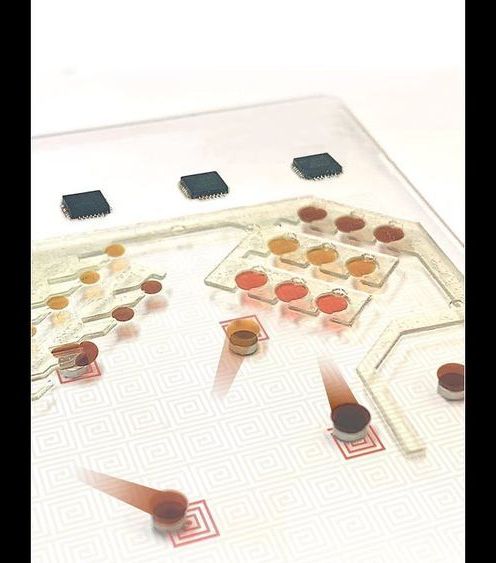UCLA engineers have developed minuscule warehouse logistics robots that could help expedite and automate medical diagnostic technologies and other applications that move and manipulate tiny drops of fluid. The study was published in Science Robotics.
The robots are disc-shaped magnets about 2 millimeters in diameter, designed to work together to move and manipulate droplets of blood or other fluids, with precision. For example, the robots can cleave one large droplet of fluid into smaller drops that are equal in volume for consistent testing. They can also move droplets into preloaded testing trays to check for signs of disease. The research team calls these robots “ferrobots” because they are powered by magnetism.
The ferrobots can be programmed to perform massively parallelized and sequential fluidic operations at small-length scales in a collaborative manner. To control the robots’ motion, electromagnetic tiles in the chip pull the ferrobots along desired paths, much like using magnets to move metal chess pieces from underneath a chess board.
